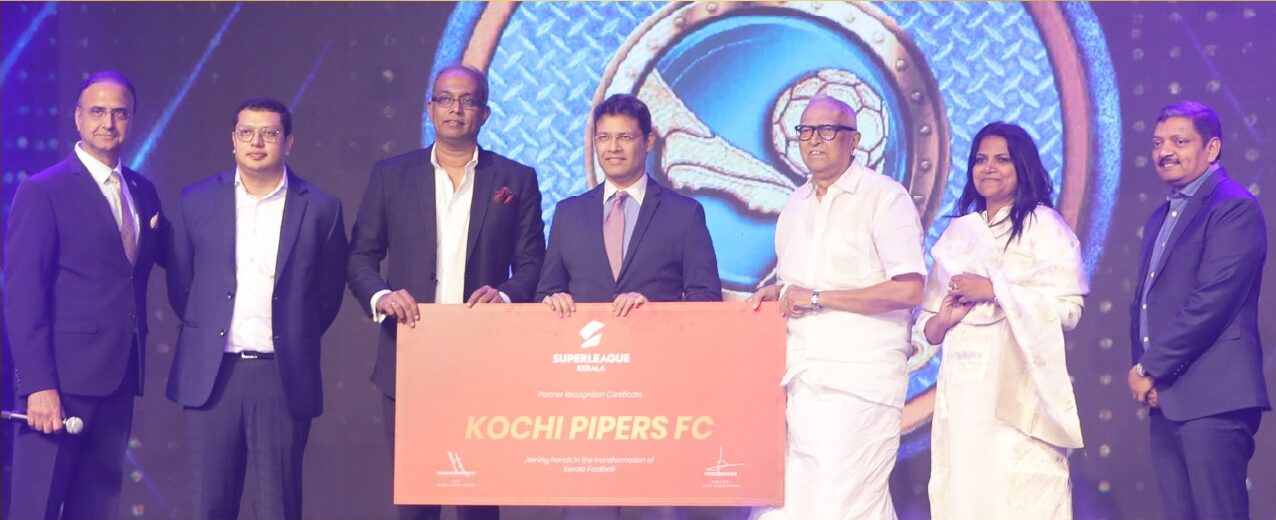The upcoming Super League Kerala (SLK) has gathered a lot of excitement amongst football fans in Kerala. With financially strong franchises, broadcast on Star Sports, and the allowance of foreign players, the league promises to be a massive boost for domestic football. As the narrative goes, increased investment could lead to improved infrastructure and provide better income for the local players.
The list of the owners of the six franchises is worth noting. Tennis legend Mahesh Bhupathi is one of the co-owners of the Kochi Pipers. Travancore Royal Family member Gowri Lakshmi Bayi is a part of the group of owners of Thiruvananthapuram Kombans FC. Renowned business group Ajmal Bismi has acquired the rights of Malappuram along with the other partners.
However, beneath the glossy veneer lies a layer of concerns that warrant scrutiny. The child is just born and at this point in time, it is not fair to raise criticism. However, we have the example of the Indian Super League in front of us and the SLK bears an uncanny resemblance to the same. Just like the ISL, which emerged alongside the existing I-League due to a lucrative deal with IMG-Reliance and the All-India Football Federation (AIFF), the Super League Kerala is a product of such a deal between the Kerala Football Association (KFA) and Scoreline Sports Private Limited.
This parallel extends to potential regulatory issues. The ISL initially allowed six foreigners in the playing XI which was then against the AFC regulations of a maximum of four foreigners in the playing XI. Likewise, the SLK’s allowance of foreign players contradicts AIFF rules that prohibit them in state leagues, even though they have taken permission from the AIFF to allow foreigners. Another similarity, which is not controversial, is the involvement of Kovalam FC, a Kerala Premier League club, in the Thiruvananthapuram franchise. This mirrors the situation with FC Goa, where I-league clubs Dempo and Salgaocar were stakeholders at the time of formation. We all know what happened to Dempo SC and Salgaocar FC after that.

The standalone nature of the SLK also raises eyebrows. Unlike other lower-division leagues, there’s no promotion or relegation system. This begs the question: what’s the incentive for winning the title? Does it offer a pathway to the I-League 3rd Division like the KPL, or is it simply a standalone competition without any benefits in the next season?
The potential impact on the existing Kerala Premier League (KPL) is a significant concern. The KPL has legacy clubs like Kerala Police and KSEB, the ones who developed young talents despite having no financial returns. KPL also has participants like the reserve sides of Gokulam Kerala FC and Kerala Blasters FC, the most famous Kerala clubs of the current era. With the KPL already struggling with promotion opportunities, the arrival of the SLK with its high budgets threatens to further marginalize these established clubs, at least the legacy ones. Could this be a case of history repeating itself, mirroring the decline of the I-League after the ISL received preferential treatment?

The IMG-Reliance (FSDL) came on board as the marketing partners of AIFF and the contract signed with AIFF granted them all the commercial rights to football in India. Later, using a clause written in the contract, FSDL started their league (Indian Super League) which eventually came on top of the I-league, the top division of India. Similarly, Scoreline Sports also came to the Kerala football circuit as the marketing partner and now they are starting their league. We can only hope that what happened to the I-league doesn’t happen to KPL.

According to the news reports, the per-season budget of a Super League Kerala club will be around 5 crores. That figure matches the budget of I-League clubs, but the sustainability of such high spending in a two-month-long league remains to be seen.
We’ve witnessed the ISL’s initial glitz slowly fade over the years. ISL had the luxury of dozens of sponsors in the initial 4 seasons and in the recently concluded 10th season, they hardly had a half dozen of them. Multinational jersey brands like Puma, Addidas, Lotto, and Umbro had partnerships with the ISL clubs and most of them left the scene eventually. Almost all clubs have betting companies as their chief sponsors. If SLK clubs also face such financial strain, owner motivation can dwindle, leading to cost-cutting measures that could ultimately impact the quality of the league.
The Super League Kerala holds the potential to be a game-changer for Kerala’s footballing landscape. However, a critical examination is crucial. The league’s structure, adherence to regulations, and impact on existing competitions must be carefully evaluated. We want the SLK to thrive, but only if it fosters a sustainable and healthy ecosystem for football in Kerala, not just a fleeting moment of glamour.


